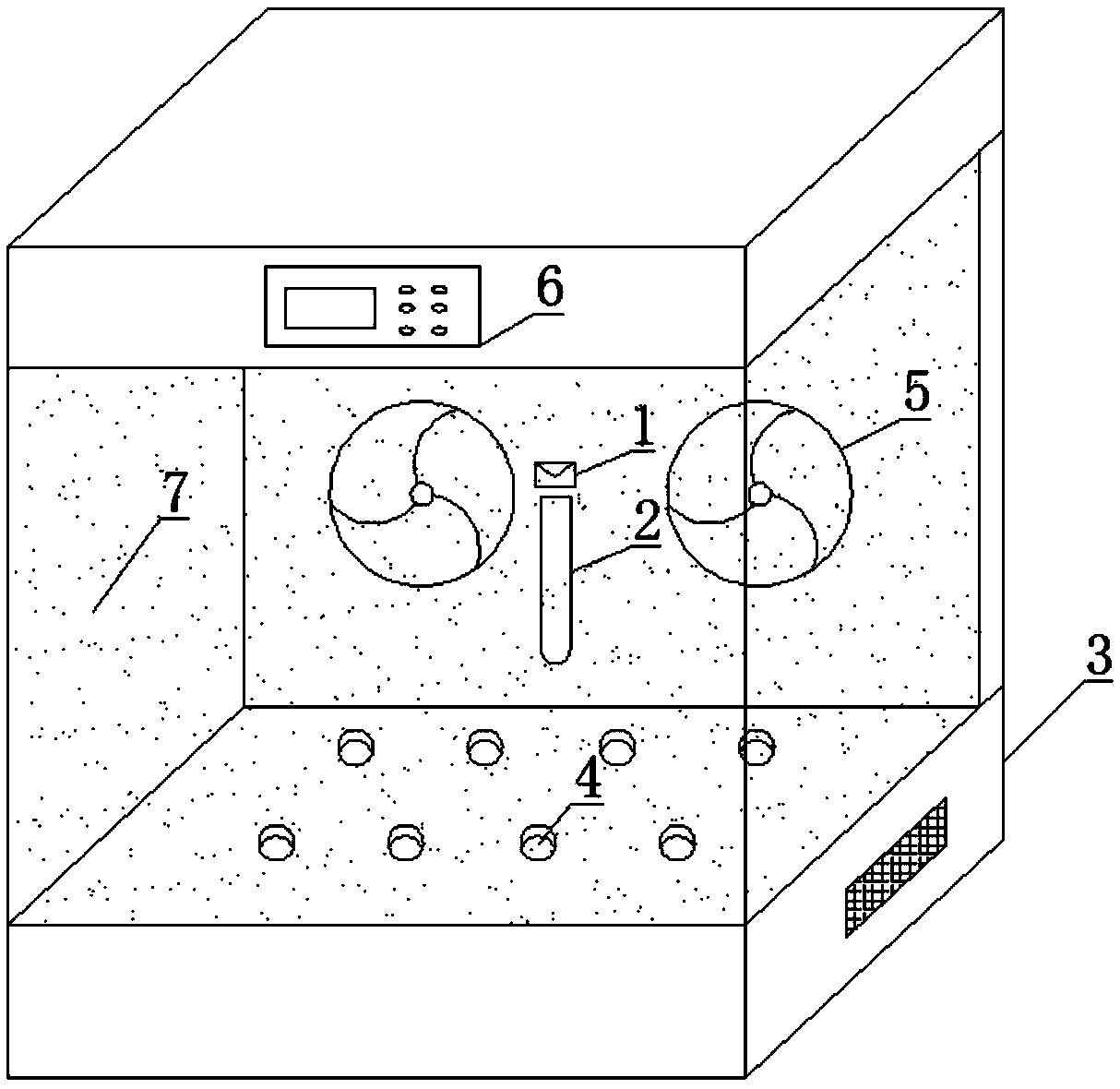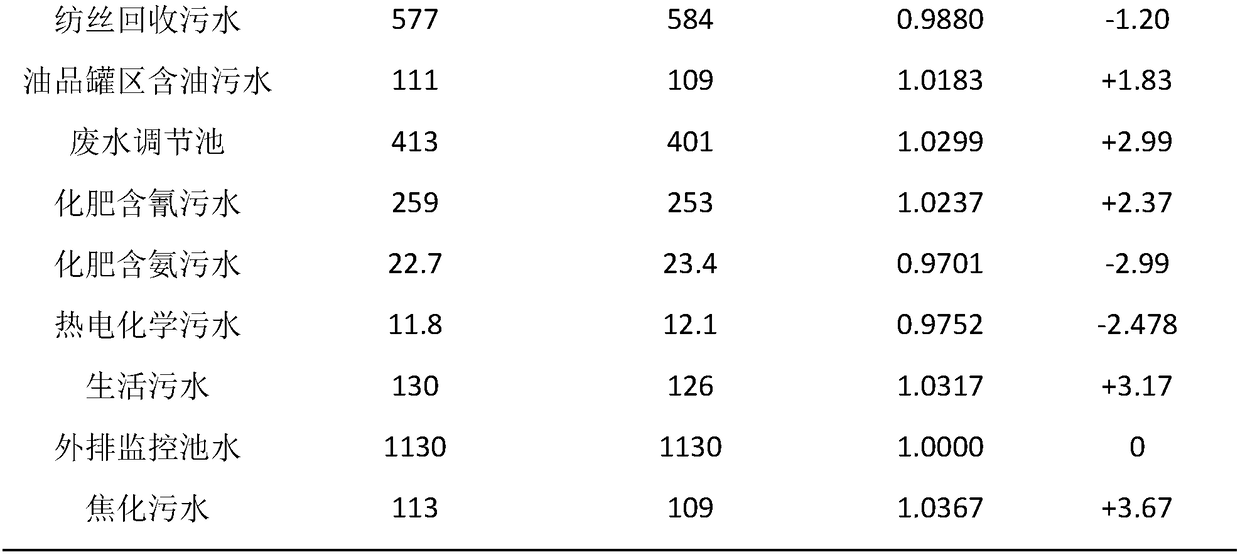Method for detecting COD in sewage and reclaimed water
A detection method and technology for regenerating water, applied in the field of chemical analysis, can solve the problems of long reflux time, loss of precious metals, large amount of reagents, etc., and achieve the effect of small titration error, preventing interference of chloride ions, and improving oxidation efficiency.
- Summary
- Abstract
- Description
- Claims
- Application Information
AI Technical Summary
Problems solved by technology
Method used
Image
Examples
Embodiment 1
[0054] Refining clean water. Carry out a blank test first, and input the parameters into the formula. Add 10mL of water sample, 14mL of sulfuric acid and phosphoric acid with a volume ratio of 3:1, and manganese sulfate-copper sulfate-aluminum potassium sulfate with a mass ratio of 3:1:1:1 in a self-made large-volume sealed digestion / titration bottle. -Chromium potassium sulfate 0.4g, 0.05mol / L potassium dichromate 10mL, closed microreflux digestion, 162°C for 30min, after cooling, rinse the lid and inner wall with a small amount of distilled water to make the total volume 70-80mL, directly use gold composite electrode The potentiometric titration method is used for detection, and the results and other relevant information are automatically displayed; the measured chemical oxygen demand (COD) of clean refinery water is 32.2mg / L.
Embodiment 2
[0056] Saline primary clarifier pool water. 10mL of water sample, 15mL of sulfuric acid and phosphoric acid at a volume ratio of 4:1, 0.5g of manganese sulfate-copper sulfate-aluminum potassium sulfate-chromium potassium sulfate at a mass ratio of 3:1:1:1, and 0.05mol / L of dichromic acid Potassium 10mL, closed micro-reflux digestion, 163 ° C for 30min, after cooling, rinse the lid and inner wall with a small amount of distilled water to make the total volume 70-80mL, directly use the gold composite electrode potentiometric titration method for detection, and automatically display the results and other relevant information; The chemical oxygen demand (COD) of the primary clarifier water is 220mg / L.
Embodiment 3
[0058] Aggregated sewage. 10mL of water sample, 17mL of sulfuric acid and phosphoric acid at a volume ratio of 3:1, 0.6g of manganese sulfate-copper sulfate-aluminum potassium sulfate-chromium potassium sulfate at a mass ratio of 3:1:1:1, and 0.05mol / L of dichromic acid Potassium 10mL, closed micro-reflux digestion, 165 ℃ for 28min, after cooling, rinse the lid and inner wall with a small amount of distilled water to make the total volume 70-80mL, directly use the gold composite electrode potentiometric titration method for detection, and automatically display the results and other relevant information; aggregated sewage The chemical oxygen demand (COD) is 63.8mg / L.
PUM
| Property | Measurement | Unit |
|---|---|---|
| Wall thickness | aaaaa | aaaaa |
| Height | aaaaa | aaaaa |
| The inside diameter of | aaaaa | aaaaa |
Abstract
Description
Claims
Application Information
 Login to View More
Login to View More - R&D
- Intellectual Property
- Life Sciences
- Materials
- Tech Scout
- Unparalleled Data Quality
- Higher Quality Content
- 60% Fewer Hallucinations
Browse by: Latest US Patents, China's latest patents, Technical Efficacy Thesaurus, Application Domain, Technology Topic, Popular Technical Reports.
© 2025 PatSnap. All rights reserved.Legal|Privacy policy|Modern Slavery Act Transparency Statement|Sitemap|About US| Contact US: help@patsnap.com



